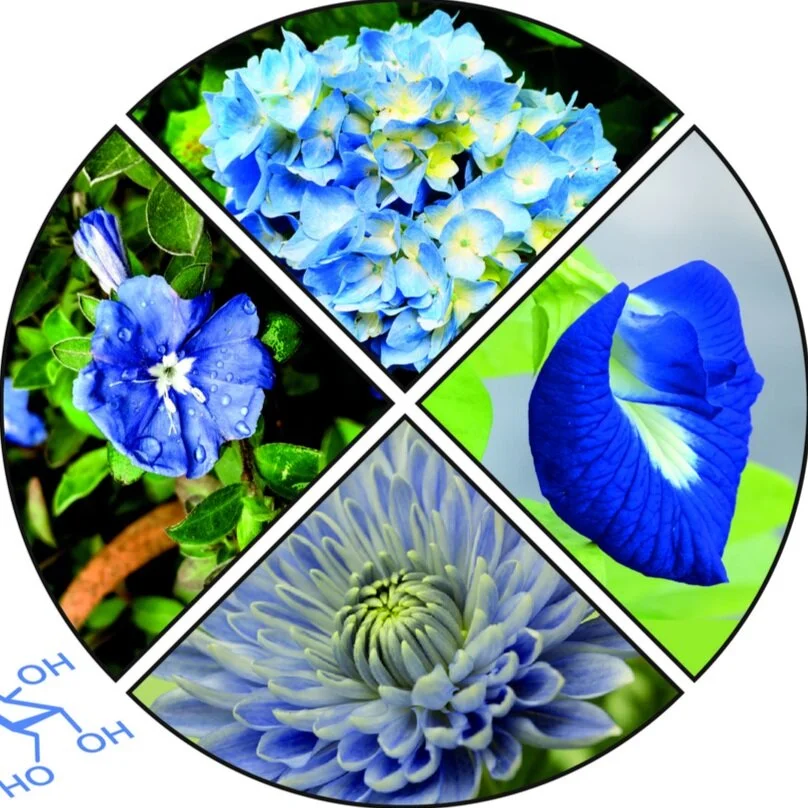OpenPlant PI Cathie Martin (John Innes Centre) and her team recently published a review with colleagues from Phyton Biotech exploring the production of blue colourants in nature by a class of molecules called anthocyanins. The article explains how structure determines the functionality of anthocyanin pigments and considers how this knowledge could be harnessed to develop blue food colourants.
Natural Blues: Structure Meets Function in Anthocyanins.
Alan Houghton, Ingo Appelhagen and Cathie Martin
Plants (2021) 10(4), 726
https://doi.org/10.3390/plants10040726
ABSTRACT
Choices of blue food colourants are extremely limited, with only two options in the USA, synthetic blue no. 1 and no. 2, and a third available in Europe, patent blue V. The food industry is investing heavily in finding naturally derived replacements, with limited success to date. Here, we review the complex and multifold mechanisms whereby blue pigmentation by anthocyanins is achieved in nature. Our aim is to explain how structure determines the functionality of anthocyanin pigments, particularly their colour and their stability. Where possible, we describe the impact of progressive decorations on colour and stability, drawn from extensive but diverse physico-chemical studies. We also consider briefly how this understanding could be harnessed to develop blue food colourants on the basis of the understanding of how anthocyanins create blues in nature.

